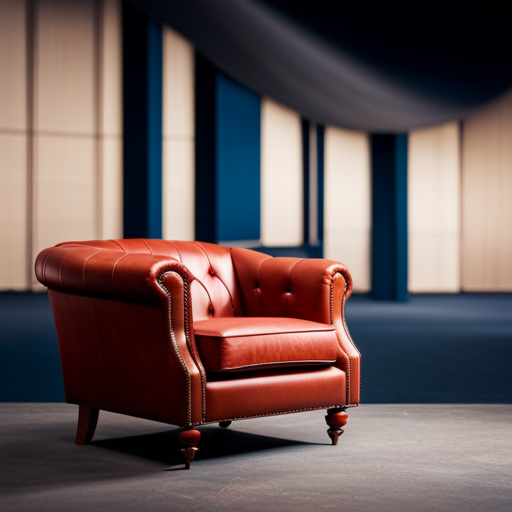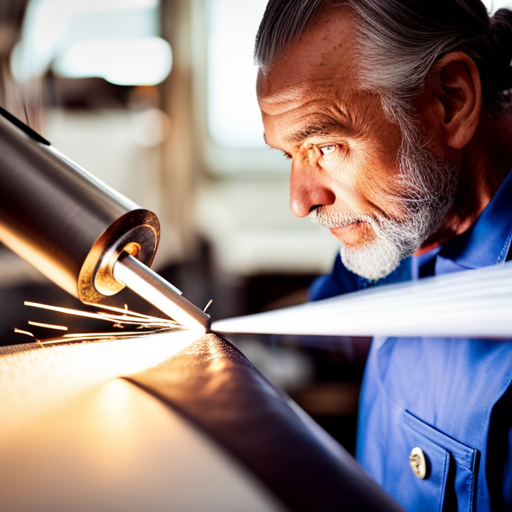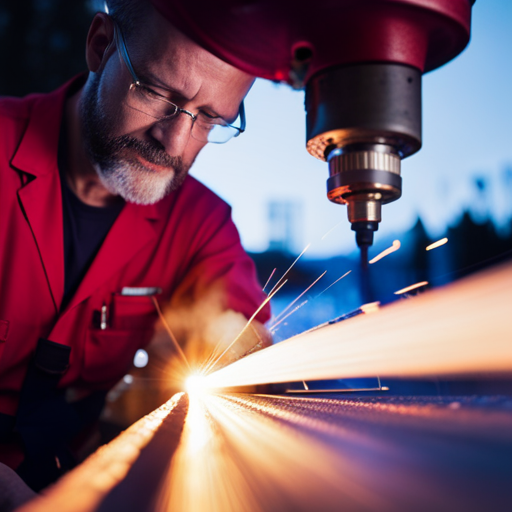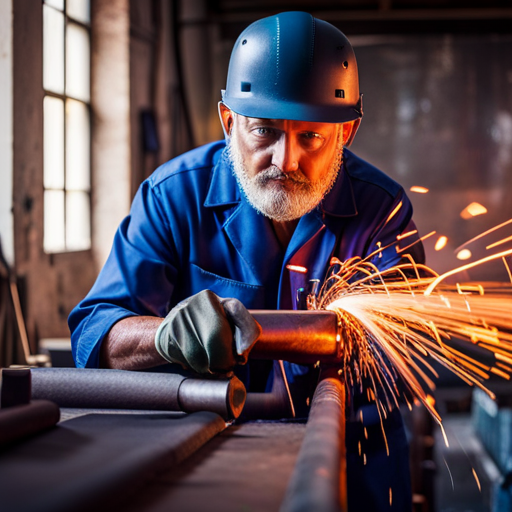Mastering the Art of Upholstery Welding
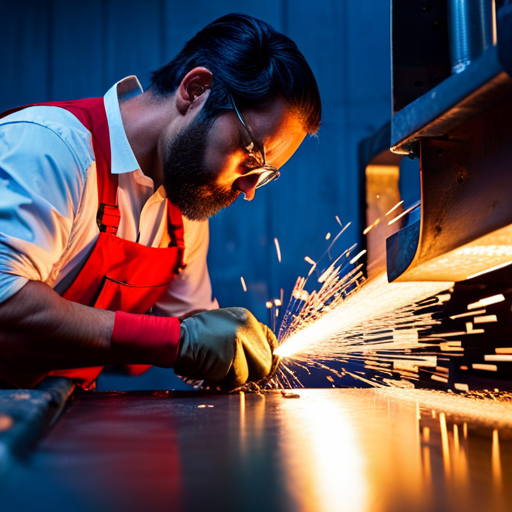
Delve into the delicate dance of upholstery welding, where precision and proficiency unite to create seamless seams and flawless fabric fusion.
In this comprehensive guide, we explore the essential elements of mastering this art, from selecting the right equipment to troubleshooting common issues.
Whether you’re a seasoned professional or a budding enthusiast, this article will equip you with the knowledge and techniques needed to elevate your upholstery welding skills to new heights.
Understanding Upholstery Welding Basics
Understanding upholstery welding basics involves mastering the techniques for joining and reinforcing fabric and materials used in furniture manufacturing. When working with upholstery materials, it is crucial to consider the heat distribution to ensure a strong and durable weld. Upholstery materials such as leather, vinyl, and various fabrics require specific heat settings and welding techniques to ensure a secure bond without damaging the material.
Heat distribution plays a crucial role in successful upholstery welding. Different materials have varying heat tolerances, and understanding these is essential to prevent scorching or burning the upholstery. Additionally, heat must be evenly distributed across the welding area to create a strong and uniform bond. This requires precision and control during the welding process.
Proper understanding of upholstery materials is also vital. Different materials react differently to heat, pressure, and welding techniques. Therefore, upholsterers must be knowledgeable about the properties of various materials to effectively weld them together. Whether it’s joining fabric to fabric, fabric to leather, or any other combination, understanding the behavior of different materials is fundamental to achieving high-quality welds.
Selecting the Right Welding Equipment
When selecting the right welding equipment for upholstery, it is essential to consider the specific materials and heat requirements for the welding process.
The welding machine is a critical component in upholstery welding. For upholstery applications, a high-frequency welding machine is often used due to its ability to weld various materials such as vinyl, PVC, and synthetic fabrics.
These machines provide precise control over heat and pressure, ensuring strong and durable welds. When choosing a welding machine, it is important to consider the type of materials that will be welded and the thickness of the materials.
Additionally, safety precautions should be a top priority when selecting welding equipment. It is crucial to choose a machine that meets safety standards and is equipped with features such as thermal overload protection and emergency shut-off mechanisms.
Proper training on the use of welding equipment and adherence to safety guidelines are imperative to prevent accidents and ensure a safe working environment.
Selecting the right welding equipment tailored to the specific requirements of upholstery work is fundamental to achieving high-quality and long-lasting welds.
Proper Preparation Techniques
To achieve successful upholstery welding, meticulous attention to proper preparation techniques is paramount.
Pre-weld cleaning is essential to ensure that the materials are free from any contaminants such as dirt, grease, or oil, which could compromise the integrity of the weld. Thoroughly cleaning the surfaces to be welded with a suitable solvent or cleaner is crucial for achieving strong and durable welds.
Additionally, material compatibility is a key consideration during the preparation phase. It is important to ensure that the materials being welded together are compatible to avoid any potential issues such as poor adhesion or chemical reactions that could weaken the weld. Understanding the properties of the materials and their suitability for welding is critical for achieving high-quality results.
Once the pre-weld cleaning and material compatibility have been carefully addressed, the next step in mastering the art of upholstery welding is to delve into the various welding patterns and techniques. Understanding the appropriate welding patterns and techniques for different materials and applications is crucial for achieving precise and aesthetically pleasing welds.
Mastering Welding Patterns and Techniques
Mastering welding patterns and techniques is essential for achieving precise and aesthetically pleasing upholstery welds. Upholstery welding requires advanced welding designs and precision welding skills to ensure high-quality results. Here are some key techniques and patterns to master:
-
Straight Line Welding: This technique involves welding in a straight line, which requires steady hands and precise control of the welding equipment.
-
Curved Line Welding: Welding curved lines demands a high level of dexterity and control to ensure smooth and even welds along the curves of the upholstery.
-
Overlap Welding: Overlapping welds is a technique used to reinforce the strength and durability of the weld, creating a seamless and robust bond between upholstery materials.
-
Decorative Welding Patterns: Advanced welding designs can be used to create decorative patterns, adding a unique and customized touch to the upholstery.
Mastering these welding patterns and techniques will elevate the quality of upholstery welds, ensuring they are not only structurally sound but also visually appealing.
Upholstery professionals who possess precision welding skills can produce flawless welds that enhance the overall aesthetic and durability of the finished product.
Troubleshooting Common Upholstery Welding Issues
Addressing common upholstery welding issues requires a comprehensive understanding of welding patterns and techniques, as well as the ability to identify and troubleshoot potential challenges that may arise during the welding process. Two crucial factors to consider when troubleshooting upholstery welding issues are material compatibility and heat distribution. Ensuring that the materials being welded are compatible with each other is essential to producing strong and durable welds. Additionally, proper heat distribution is vital for achieving consistent and reliable welds across the entire upholstery piece. Below is a table summarizing common upholstery welding issues and their troubleshooting techniques.
| Upholstery Welding Issue | Troubleshooting Technique |
|---|---|
| Weak Welds | Adjust heat settings and welding speed to achieve proper fusion. |
| Burnt or Scorched Fabric | Use a heat shield or reduce heat input to prevent damage to the fabric. |
| Inconsistent Weld Quality | Check for proper material compatibility and adjust heat distribution for uniform welds. |
| Material Warping | Use clamps or fixtures to minimize material distortion during welding. |
| Excessive Fumes | Ensure proper ventilation and consider using welding aids to reduce fume emissions. |
Frequently Asked Questions
Can Upholstery Welding Be Used on Outdoor Furniture?
Yes, upholstery welding can be used on outdoor furniture. Upholstery welding techniques for outdoor durability often involve using weather-resistant materials such as outdoor-grade fabrics and special welding techniques to ensure long-lasting resilience against outdoor elements.
What Are the Best Practices for Welding Different Types of Upholstery Materials Together?
When welding different upholstery materials together, it is crucial to master various welding techniques to ensure a strong and durable bond. Understanding material compatibility is essential to achieve a seamless and long-lasting upholstery weld.
Are There Any Safety Precautions Specific to Upholstery Welding That I Should Be Aware Of?
Safety measures for upholstery welding include proper ventilation, equipment maintenance, and fire prevention. It’s important to be aware of potential hazards like toxic fumes and flammable materials. Adhering to safety protocols is critical.
How Can I Ensure That the Welded Seams Are Durable and Long-Lasting?
Ensuring durability and longevity of welded seams involves mastering proper techniques, including selecting compatible materials, optimizing weld parameters, and ensuring thorough seam penetration. Attention to detail and precision are crucial for achieving durable and long-lasting upholstery welds.
What Are Some Creative Ways to Incorporate Upholstery Welding Into Custom Furniture Designs?
Incorporating upholstery welding into custom furniture designs involves exploring creative design concepts and employing innovative techniques. This process allows for the fusion of metal and fabric to produce unique and durable pieces that elevate the overall aesthetic and functionality of the furniture.
Conclusion
In the intricate world of upholstery welding, mastering the craft is like weaving a tapestry of precision and skill. Understanding the basics, selecting the right equipment, and mastering techniques are essential steps in creating seamless and durable upholstery welds.
Like a skilled artist with a paintbrush, a welder must troubleshoot common issues and perfect their patterns to create a masterpiece.
With dedication and practice, one can truly master the art of upholstery welding.

Dillon Hince, an expert in the realm of upholstery welding, brings a wealth of knowledge and experience to the craft. As the driving force behind nodpu.com, Dillon combines a passion for precision and creativity, offering unique insights into the art of seamlessly melding fabrics and materials. With a commitment to excellence, Dillon Hince is your go-to resource for innovative upholstery welding techniques, transforming ordinary pieces into extraordinary works of functional art.

